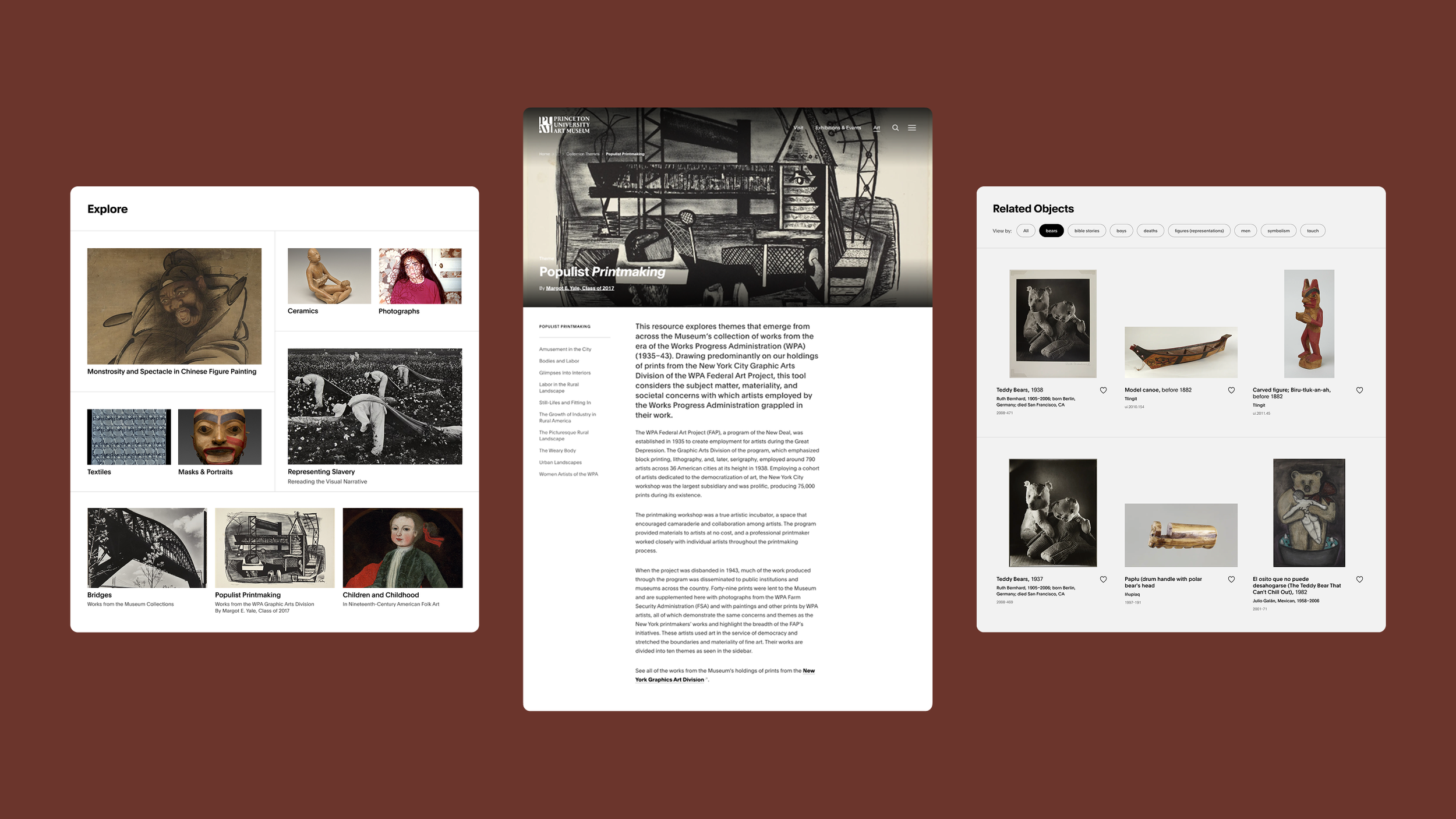Princeton University Art Museum
The Princeton University Art Museum asked us for a digital experience as bold, inclusive, and forward-looking as its new building, while also serving a diverse and intellectually curious community of students, scholars, and the public.
Making a strong first impression
Just like the building itself, the website invites exploration from every direction, with dynamic, accessible entry points that reflect PUAM’s dual commitment to scholarly rigor and public accessibility. The homepage sets the tone with an immersive arrival moment that introduces the Museum as a cultural and academic hub: a place that’s welcoming, active, and open to all. As you scroll down, the homepage continues to foreground current exhibitions, public programs, and accessible entry points to art, capturing the Museum’s role as a place where ideas and people converge.
Extending the new brand online
Working closely with the visual identity developed by the agency 2x4, we translated the new brand into a digital language. Bold crops of artwork create immediacy and intrigue. Refined typography and a confident color palette guide users without overwhelming the art, striking a balance between clarity and sophistication.
A robust collection search
The new website offers powerful ways to explore PUAM’s collection of over 117,000 works, designed and built in close collaboration with the Museum’s team. Visitors can dive in through a user-friendly collection search that includes helpful suggestions, smart filters like year, culture, and place made, and even a “surprise me” feature to spark discovery. For scholars and researchers, an advanced search tool enables granular queries across specific fields, with support for Boolean logic to surface precise results. The design presents a complete set of choices without overwhelming users, making exploration intuitive for all levels of curiosity.
Helping visitors discover art
The site’s design encourages self-directed exploration. Curated themes offer approachable entry points into the collection, grouping objects in thoughtful ways and providing helpful context. Many artworks also include related objects, videos, or articles, which support continued discovery and invite visitors to follow their curiosity across 50,000 years of art.
Credits
Creative Direction
Troy Lachance
Narrative Lead
Nina Callaway
Project Management
Katie Lannigan, Sarah Willis
Designer
Xinran Zhou
Technology Lead
Putra Bonaccorsi
